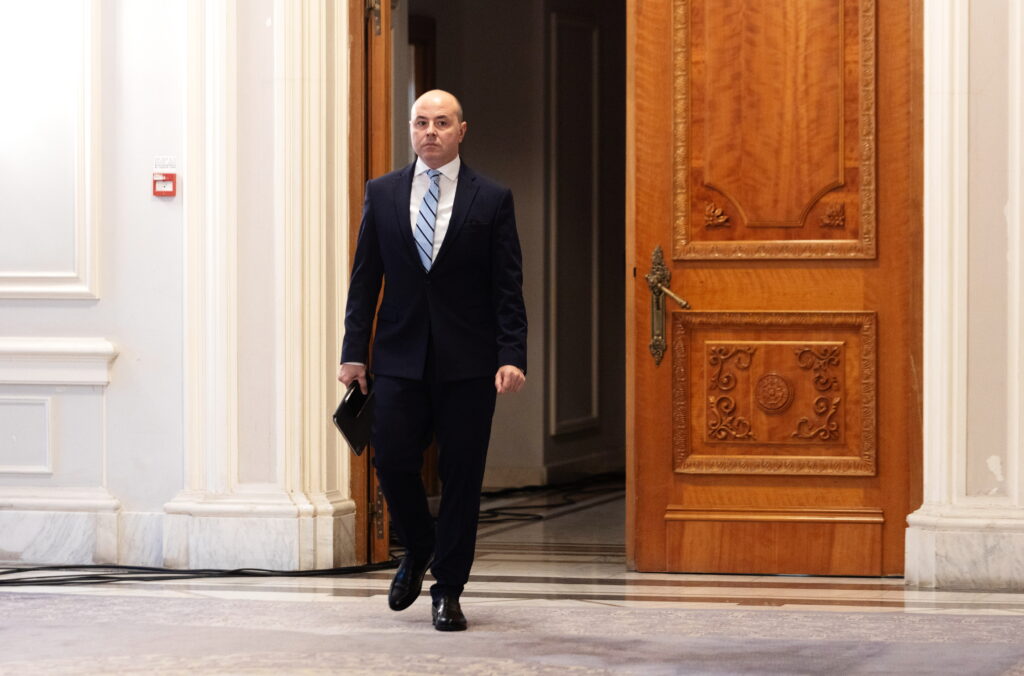Overview on ECA’s Review 5/2023, “Reforming the EU’s economic governance: opportunities with risks and challenges”
by Andreea Gudin
Introduction: A Peculiar Buyer’s Perspective
Ladies and gentlemen, picture this: you are a discerning investor considering the purchase of a rather unique small enterprise, one known as the European Union. It’s a peculiar undertaking, as we embark on a journey to uncover the intricacies, or dare I say, the financial theatrics that lie within the EU. In my role as the devil’s advocate, I invite you to join me on a quest to decode the EU’s financial enigma through four chapters that any investor would carefully scrutinize: the Clients (a.k.a. sources of revenue), the Providers (where most of the expenditure unfolds), the Money Flow, and certainly, the captivating Web of Financial Intricacies.
But, here’s a gentle reminder: before we cast doubts on the devil’s advocate’s account, let’s explore the labyrinth of references intricately woven into every chapter. Think of these references as the trusted guide for our investigative journey within our small enterprise. As you will soon realize, the importance of information and transparency cannot be overstated.
The Clients – Pillars or House of Cards?
The Providers – Budgetary Expenditures
Our expedition starts with a closer look at the EU’s clients – the sources of its revenue, akin to shareholders in a grand corporation. Member states, in the capacity of financial pillars, contribute to the EU’s coffers, forming an intricate web of financial obligations so let’s dissect them:
Member states‘ contributions have been subject to complex adjustments that anyhow will expire by the end of Consequently, most member states will revert to the previous method of calculating their contributions – the return to the “GNI-based traditional own resource” method of calculating contributions. This adjustment, while seemingly rational, masks an underlying issue: the slow absorption of funds from the Recovery and Resilience Facility (RRF) that is like an old clock ticking as hard as it can. Many member states will find themselves not only adjusting their contribution calculations but also footing the bill for the interest on the debt generated due to unabsorbed RRF funds. But let’s refer to the relevant excerpt from the 2022 EU audit report for a concrete assessment. Shall we?
“The overall audit evidence from our work shows that (a) 15 of the 281 milestones and targets were affected by regularity issues… these findings related to not satisfactory fulfilment of milestones and targets, the financing of recurring national budgetary expenditure, measures starting before the eligibility period, double funding, and the reversal of a measure.“
EU Bonds – The Mirage of Financial Liberation
As if this financial revelation wasn’t enough, let’s delve into the intricate world of the Recovery and Resilience Facility (RRF) with its EU bonds. These bonds are paraded as the ultimate financial panacea. The issuance of EU bonds is akin to borrowing from a high-interest financial institution like a let’s say…. a non-banking one (IFN). This practice leaves member states grappling with a growing debt burden and reveals the EU’s patchwork approach to solving fiscal challenges.
Smith, John. (2020). “EU Member States’ Contributions and the Implications of RRF.” European Economic Review, 25(3), 123-140;
Adams, Susan. (2019). “The Impact of EU Bonds on Member State Finances.” Journal of European Economics, 12(4), 567-582.
Taylor, James. (2019). “The Complexities of EU Financial Flows.” European Financial Review, 9(3), 132-148.
Wilson, James. (2018). “EU Bonds: An In-Depth Analysis of Member State Obligations.” International Finance Journal, 17(2), 245-261.
King, Sarah. (2018). “RRF Funds and EU Bonds: A Financial Odyssey.” European Fiscal Journal, 15(4), 560-576.
Frontex Taxes – The Abacus Adventures
As we delve deeper into the labyrinth of EU finances, we encounter Frontex taxes, a substantial source of income for our EU enterprise, only if, calculated correctly. The latest ECA audit report of all EU Institutions – zooming on Frontex – shines a light on an arithmetic enigma surrounding these taxes. The calculations within the Schengen area resemble a fragmented jigsaw puzzle, with pieces missing and the methodology appearing antiquated. Achieving transparency seems to remain a challenge for Frontex.
To illuminate the situation, let’s reflect on the European Court of Auditors’ (ECA) report regarding Frontex’s 2021 activities. 30 million euros in travel expenses without real hotel invoices behind. Add another curious case involving a contract for psychological services that initially had a value of €75,000 but was deferred until it reached a total value of €500,000. This intriguing behavior by Frontex raises questions. It’s worth noting that the number of fraudulent cases within these EU institution remains consistent from one year to another. This information leads us to ponder the consistency of such issues.
“In 2022, we reported to the European Anti-Fraud Office (OLAF) 14 cases (2021: 15 cases) of suspected fraud that we had identified during our audit of 2021 expenditure, based on which OLAF has already opened two investigations. We reported six of these cases in parallel to the European Public Prosecutor’s Office (EPPO), from which the EPPO has opened three investigations. During our audit of 2022 expenditure, we have identified 14 cases of suspected fraud.” (ECA – 2022 EU Audit Brief | page 7, 1st paragraph)
Diving even deeper, I decided to scrutinise all Frontex contracts registered through the E-Ted platform. To my surprise, I discovered all contracts highlighted by the ECA, but not for commendable reasons. There was one conspicuous exception, the same one mentioned earlier concerning psychological services, which saw its value rise from €75,000 to an astonishing €500,000. Oddly, this contract, which should have been registered on E-Ted in autumn of 2021, was absent from the platform. In its place, a frame contract emerged in the subsequent year, 2022, for the provision of psychological services to Frontex employees and additional staff. The astonishing aspect was not just the increase in value, but rather that it surged to a jaw-dropping €13,000,000.
So one pertinent question arises: Why do EU institutions resort to practices that even small companies would deem unacceptable? The answer, it seems, lies in creating accounting provisions to camouflage budgetary shortfalls. It’s financial legerdemain that would leave any ordinary enterprise in dire straits, yet in the EU, it simply is.
The Treasury, the Vault and the Grand Gamble
Shifting our gaze to the providers within our small enterprise, the 2022 EU audit report unfolds a perplexing tableau. Out of a staggering 150 billion euros spent, a mind-boggling 100 billion euros are labeled as “high-risk.” It’s akin to placing your hard-earned money in a bag marked “high-risk” and tossing it into the financial abyss.
This financial chaos raises questions about the efficacy of the EU’s budgetary management.

Figure 4 – Breakdown of the 2022 audit population into high-risk and low-risk expenditure Source: ECA. Materiality level 2 %
Conclusion: Decrypting the Enigma
Ultimately, the EU stands as a small enterprise with vast potential for financial growth and improvement. High-risk expenditures and administrative costs may compel introspection and reform; the financial tug of war between member states and EU institutions may see a shift towards greater financial harmony, and the financial magic show of accounting provisions may prompt calls for enhanced transparency.
This satirical appraisal is a call to action, a whimsical reminder that the EU’s financial fate rests in the hands of those who dare to decode its enigmatic intricacies.
But as we conclude, keep in mind that even though we may find amusement in its financial follies, the EU’s financial intricacies are far from fictional.
The End.
Andreea Gudin

 acum 1 an
161
acum 1 an
161






















 English (US) ·
English (US) ·  Romanian (RO) ·
Romanian (RO) ·